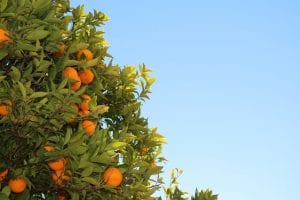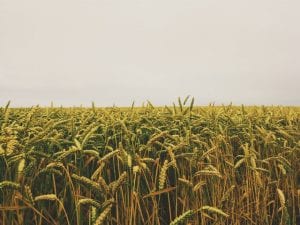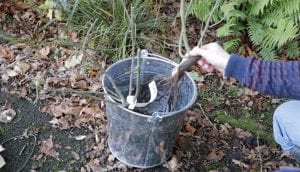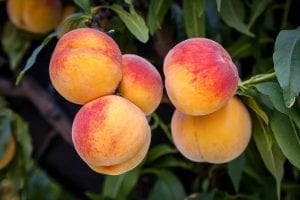Fruits, such as apple, grape, orange, mangoes, papaya, and others, are sweet and fleshy products of a tree or other plant that contain seeds and consumed by humans and animals. Raw, frozen, stewed, fried, or dried fruits are all options. Fruits are three categories: easy, aggregate, and multiple.
Some fruits, such as tomatoes and peaches, are fleshy, while others, like coconuts and peanuts, are dry. They can contain several seeds, such as cantaloupe and watermelon, or only one seed, such as avocados, almonds, and cherries. Fruits can be enormous, such as pumpkins, or minor, such as blueberries. Raw, frozen, stewed, fried, or dried fruits are all options.
Planting a fruit tree is a long-term investment; it will take a year or three for a tree to bear fruit, but most fruit trees may live for 20 to 30 years or longer. Little planning and forethought go a long way in giving a fruit tree the best chance at a successful start in life.
When Is It Best To Plant A Tree?
“The best time to plant a tree was 20 years ago,” says an old proverb. “Now is the second-best time.” You can’t go back in time, but you can plant a fruit tree today that will sustain your family for centuries.
You can plant trees at any time of year, but the best time to do so is in the spring when the ground is soft. The more time you offer your tree between planting and summer, the better. Summer temperatures are stressful for young, unestablished trees.
On the other hand, deciduous trees lose their leaves in the fall and go dormant in the winter, so they’re better planted in the winter, though you can also plant them in the spring and autumn. Evergreen trees, which are in leaf all year, are best planted in the spring and autumn when the weather is mild and the tree is still growing, allowing the roots to access more water.
The pit is not the best idea to plant trees in summer because the ground will be dry, making it difficult for the roots to expand quickly enough to obtain more water. Meanwhile, the leaves of the tree will lose moisture by the intense heat and wind.
Where Do You Plant A Fruit Tree?
Trees and plants photosynthesize, creating sugars for energy, sunlight, water, and carbon dioxide. More sunshine means more energy, and more energy means more fruit.
All fruit trees need at least 6-8 hours of clear, direct sunlight when in leaf to bear fruit. Fruit production decreases as the amount of sun available decreases. Choose a location that gets plenty of sun for most of the year and plant your tree there.
Tree Planting Soil Preparation
Prepare your soil before planting to avoid wasting endless hours later trying to fix a problem. All grounds are of different combinations of sand, silt, and clay, and each has its own set of advantages and disadvantages.
Clay soils retain moisture and nutrients but do not drain well, while sandy soils contain water and nutrients but do not drain well. These issues can affect the plant, improving soil quality by incorporating organic matter, including compost and manure. In sandy soils, adding organic matter increases moisture and nutrient preservation, while in clay soils, it improves drainage.
In general, use seven parts soil, two parts compost, and mix with one part of manure. If manure isn’t available, replace it with seven parts soil and three parts compost. It’s simple to calculate with a spade, garden trowel, potting mix scoop, or empty plastic pot.
You Should Soak Plant With Bare Roots
Planting a tree should not be rushed. Please take a close look at the roots whenever you extract them from the bottle. If the plant is bare-root, soak it for one to two hours in a bucket of water in a sunny position before planting. Soak the root in water to rehydrate their tissues. Then, trim off any harmed plant root before planting.
Fill The Dug Hole
Place the plant in the hole and fill it around the tree with the soil-compost-manure-mix. Use your hand to gently pack the soil around the roots to ensure proper root-to-soil touch, as the tree can dry out if there are large air pockets around the plant roots.
Mulch The Area Around Your Tree.
Mulching keeps soil moisture in the root zone and keeps weeds at bay, decreasing competition and slowing the growth of young trees. Leave at least 2 inches of bare soil between the mulch and the bark to ensure that the mulch does not contact the trunk.
When It’s Necessary, Put A Stake
It’s not enough to stake trees while they’ve planted. Stability, the trunk’s size, the amount of wind in the area, and the overall strength of the newly planted tree will determine if staking is necessary. For the first two to four years, some trees need to be staked before the trunk can support itself.
Keep Your Tree Healthy
Deer, rabbits, and other critters enjoy the young trees. Your tree can die if they eat the bark because the wounds provide an ideal entry point for bacteria and other diseases. Wrapping chicken wire or another fencing around your young tree to keep predators away is one way to protect it.
Water Well For Growth
The most important task you have after planting your tree is to water it. It can take weeks or months for trees to develop themselves properly. Grow a healthy tree by watering it daily for the first month and once weekly after that.
Producing Fruit
The majority of fruit trees do not bear the first year they are planted because they focus all of their energy on growing new roots, branches, and leaves. The time it takes for a plant to bear fruit is shown below.
Citrus takes 1-2 years to mature.
Fig takes 2 – 4 years.
Peach is between 2 – 4.
Plum takes 3-5 years to mature.
Sour or tart cherry 3-5 years
Apple trees take 4-5 years
Pears take 4-6 years to mature.
Ten years for Mulberry
All You Need To Know About Growing Apples!
Some apple trees can withstand temperatures as low as -40°F in the winter. Choose an apple tree that will thrive in your area’s winter climate.
Apples do not grow well on the coast, where temperatures are mild for most of the year.
Apples thrive under direct sunlight. A tree that receives only partial sunlight will not produce as many apples as full sunlight.
Apples thrive in well-drained loamy soil but can also thrive in sandy or clay soil.
Apples thrive in soil with a pH of 6.0 to 7.0.
Plant apples away from the wind or breeze. Planting apples in a low area where cold air or frost will settle is a bad idea.
Late spring frosts can kill Apple flowers. After peaches, cherries, and almonds, apples bloom in late spring.
Frosts in the early fall will harm the fruit. Choose a variety that is appropriate for your growing area.
Planting in the exact location where apple trees have previously flourished is not recommended. Appletree pests and diseases may still be present in the soil.
An apple tree can produce anywhere from 75 to 130 pounds of fruit per year.









